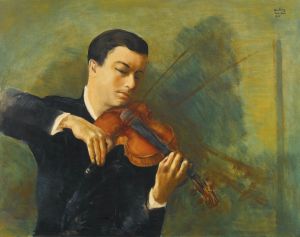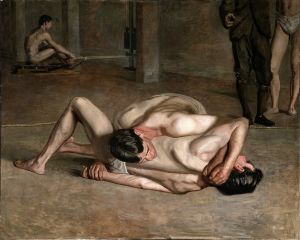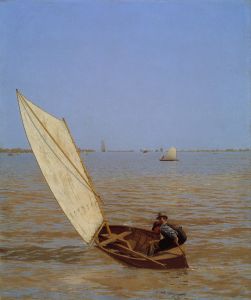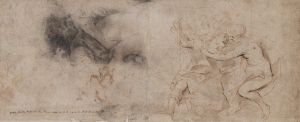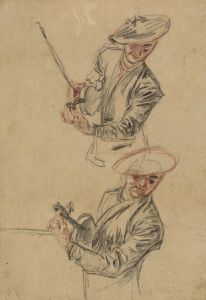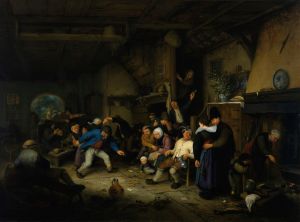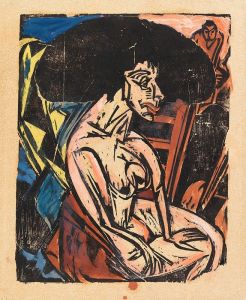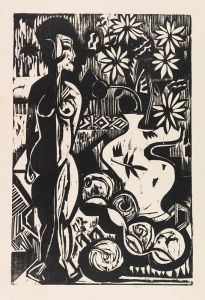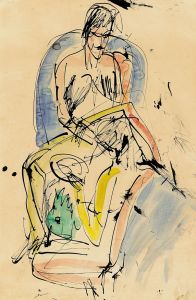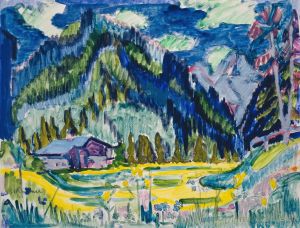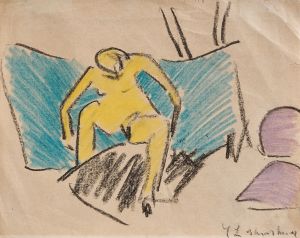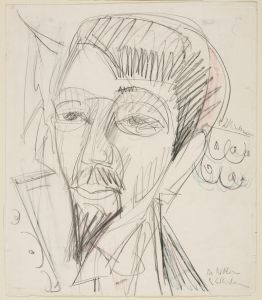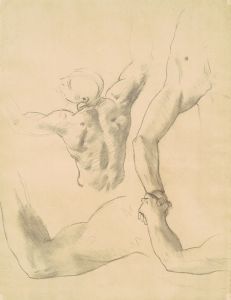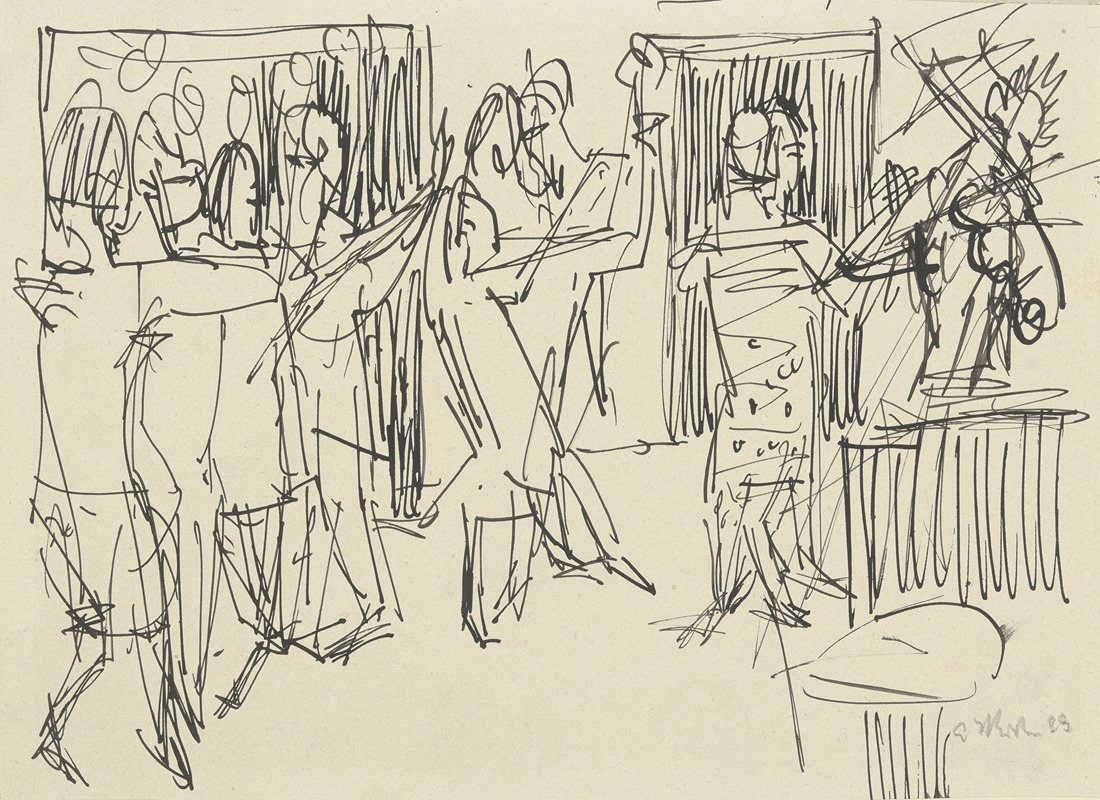
Vier tanzende Paare und Geiger
A hand-painted replica of Ernst Ludwig Kirchner’s masterpiece Vier tanzende Paare und Geiger, meticulously crafted by professional artists to capture the true essence of the original. Each piece is created with museum-quality canvas and rare mineral pigments, carefully painted by experienced artists with delicate brushstrokes and rich, layered colors to perfectly recreate the texture of the original artwork. Unlike machine-printed reproductions, this hand-painted version brings the painting to life, infused with the artist’s emotions and skill in every stroke. Whether for personal collection or home decoration, it instantly elevates the artistic atmosphere of any space.
Ernst Ludwig Kirchner, a prominent German expressionist painter and one of the founding members of the influential artist group Die Brücke, created the painting "Vier tanzende Paare und Geiger" (Four Dancing Couples and Violinist). This artwork exemplifies Kirchner's dynamic style and his interest in capturing the vibrancy and movement of modern life.
Kirchner was born in 1880 in Aschaffenburg, Germany, and he studied architecture in Dresden before fully committing to painting. In 1905, he co-founded Die Brücke with fellow artists Fritz Bleyl, Erich Heckel, and Karl Schmidt-Rottluff. This group sought to create a new artistic expression that bridged traditional academic art and modern avant-garde movements. Their work often featured bold colors, simplified forms, and an emphasis on emotional experience.
"Vier tanzende Paare und Geiger" is a testament to Kirchner's fascination with the energy and rhythm of urban life, a theme prevalent in his work. The painting depicts four couples engaged in dance, accompanied by a violinist. The figures are rendered in Kirchner's characteristic style, with elongated forms and exaggerated movements that convey a sense of fluidity and dynamism. The use of vibrant colors and strong lines further enhances the sense of movement and excitement.
Kirchner's work was heavily influenced by the rapid changes in society during the early 20th century, including the rise of cities and the evolution of social norms. His paintings often reflect the tension and exhilaration of modern urban environments. In "Vier tanzende Paare und Geiger," the dance scene can be seen as a microcosm of the bustling city life that Kirchner was so keen to capture.
The painting also reflects Kirchner's interest in non-Western art forms, which he and his contemporaries admired for their perceived authenticity and emotional directness. This influence is evident in the stylized forms and the emphasis on expressive line work, which are hallmarks of Kirchner's expressionist approach.
Throughout his career, Kirchner faced numerous challenges, including the trauma of World War I and the subsequent political and social upheavals in Germany. Despite these difficulties, he continued to produce art that explored the complexities of human experience. His work was later condemned by the Nazi regime as "degenerate art," and many of his pieces were removed from German museums. However, Kirchner's legacy endured, and he is now celebrated as a pivotal figure in the development of modern art.
"Vier tanzende Paare und Geiger" remains an important piece within Kirchner's oeuvre, illustrating his ability to convey the vibrancy of life through expressive forms and colors. The painting is a vivid example of how Kirchner and his fellow expressionists sought to capture the essence of their rapidly changing world, using art as a means to explore and express the emotional undercurrents of their time.





